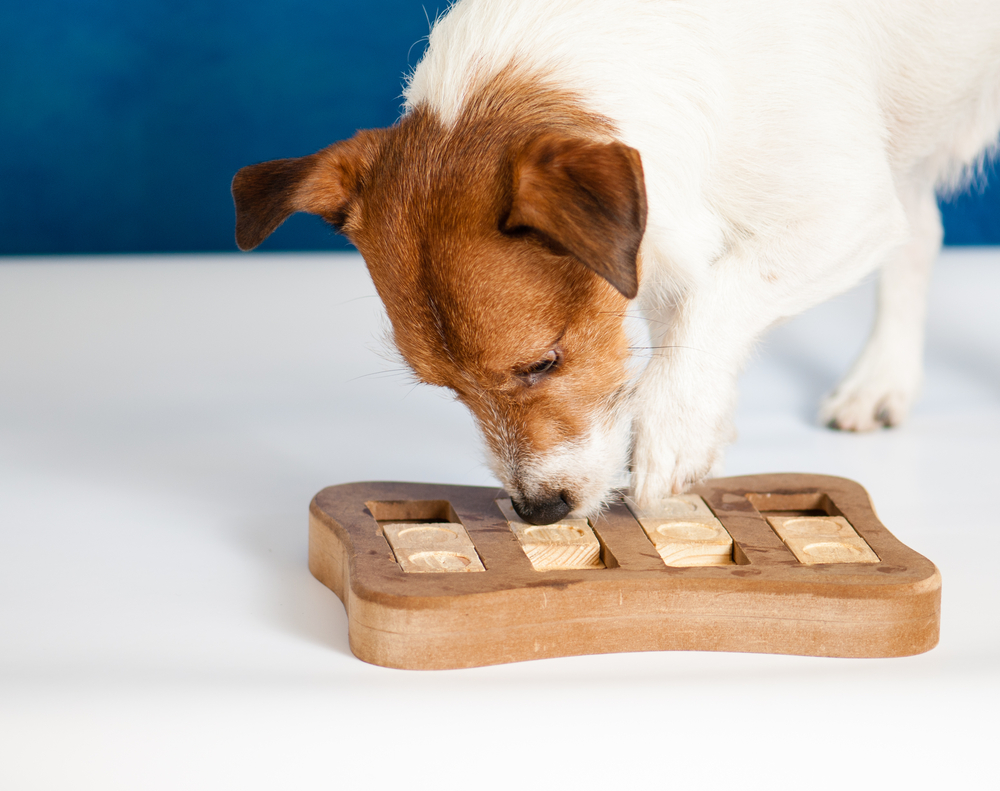Your Guide to Indoor Pet Enrichment

Pet environmental enrichment has become critical in encouraging smarter, healthier, and better behaving pets. Enrichment engages your pet mentally and physically, and is necessary for reducing the anxiety, boredom and frustration associated with being indoors.
The concept of enrichment doesn’t have to be a complex one. There are many simple ways to implement an indoor pet enrichment program of your very own. The team at OVRS is here to help guide you through some of these options.
Indoor Pet Enrichment: What’s It All About?
The study of improving animal health and wellbeing, including behavioral health, has been an important part of caring for animals in places like zoos, shelters, and aquariums. Many of those principles are now being applied with pets.
Even though they may get their daily walk, your pet probably spends much of their time inside, especially in winter. Can you imagine staying in the house as many hours as they do without feeling frustration?
The aim of enrichment is to make your pet’s living space more interesting and give them ways to act out their normal behaviors, like jumping, play stalking, hiding, figuring things out, etc. Just like us, animals require activities that fulfill them and enable them to behave per their species.
According to Ohio State University’s College of Veterinary Medicine, enrichment focuses on:
- Sensory enrichment, such as sight, smell, taste, etc.
- Food based enrichment
- Novel, or new, games or toys
- Social enrichment (i.e. playtime with family members, walks to the park, interaction with other pets)
- Training (obedience, agility, trick training)
Many destructive behaviors, like chewing, house soiling, and aggression can be a result of a lack of environment enrichment.
Putting Pet Indoor Enrichment Into Action
Enrichment is your pet’s best friend. Adding enrichment can be surprisingly simple by using things around the house or easy DIY projects.
- Use a Kong toy and fill it with peanut butter or invest in a food dispensing puzzle or game for slower mealtimes with a challenge. Small balls filled with food can add additional exercise for your cat or dog.
- Give your pet a view of a bird feeder, or enclose an outdoor patio where your pet can experience the outdoors (sight, smells, etc.) without risking safety. You may even want to build your cat a private catio!
- Having another pet to interact with may be a boredom buster for your pet. Consider adding another pet, or invite well-behaved, vaccinated pets come over for a pet playdate (while you socialize with other pet owners).
- Take 15-30 minutes out of the day to focus on and interact with your pet. This can be a family affair with walks or a backyard game of dog friendly tag football. Include time to look your pet in the eye and really connect. Your pet requires that devoted time to bond with you and to feel safe, secure, and loved.
- Training is essential for dogs, and can also be helpful for some cats. If your pet has all of the basics, try more advanced training like loose leash or off leash training. Trick training or nose work are great ways for your pet to learn while enduring grey winter days.
- Hiding spots are the cat’s meow! Try adding a few open boxes, carriers, cases, and empty bins around the house for added enticement.
- Scratching and climbing is something cats do, so be sure to have plenty of scratching posts and a cat tree or two for your feline friend.
- The thrill of the chase is an instinctual behavior in both cats and dogs, and can be easily replicated through a game of hide-and-seek or play with a laser pointer.
- Change up your pet’s toys every so often, as they can get bored with the older ones.
- Hide your pet’s toys or treats in various spots for an added game of adventure. Dogs love to scavenge and this will fulfill that need.
The best way to ensure a happy, well-adjusted pet is to keep things fresh in their daily routine. No one wants to do the same-old, same-old each day, in the same boring space or along the same path. The basic components of enrichment include activities that are meant to be mentally challenging and that give your pet a reason to move, figure things out, and be alert.
For ideas about indoor pet enrichment, please do not hesitate to call us.


